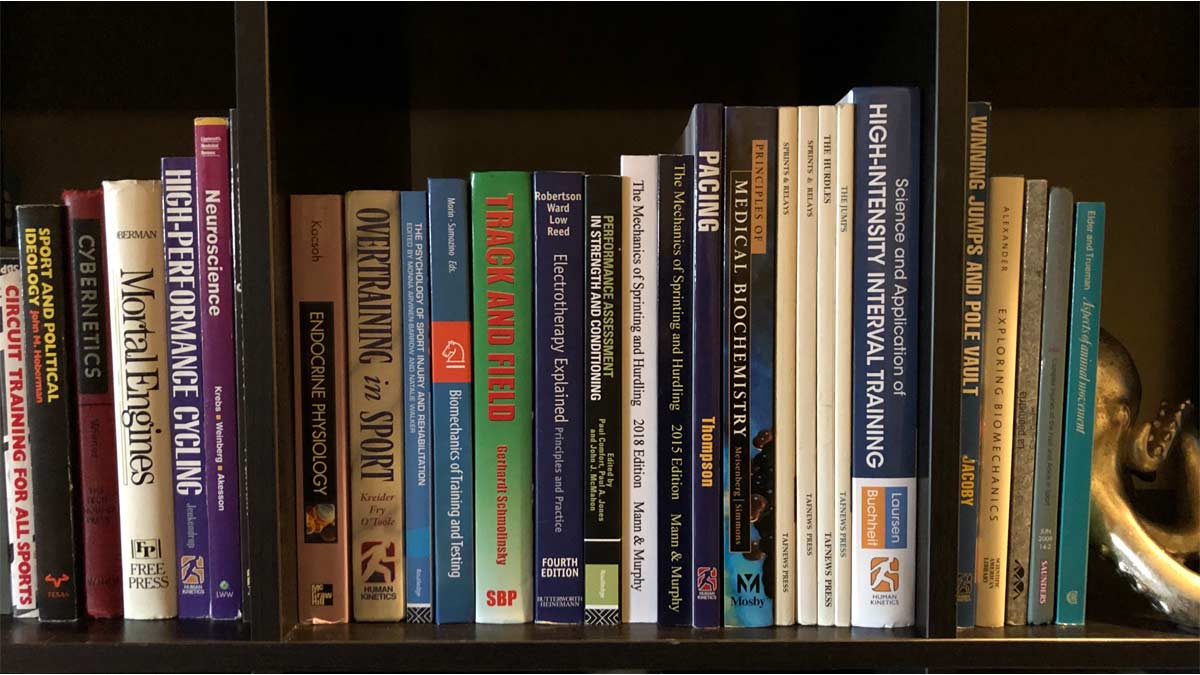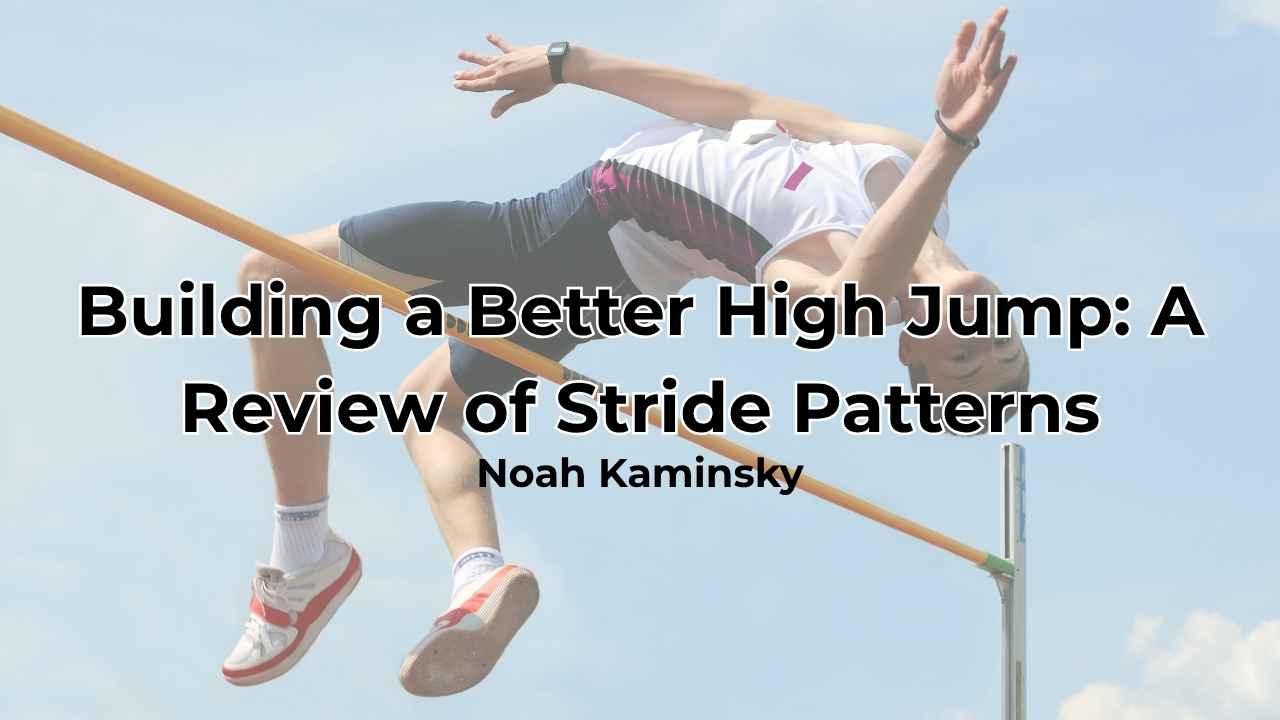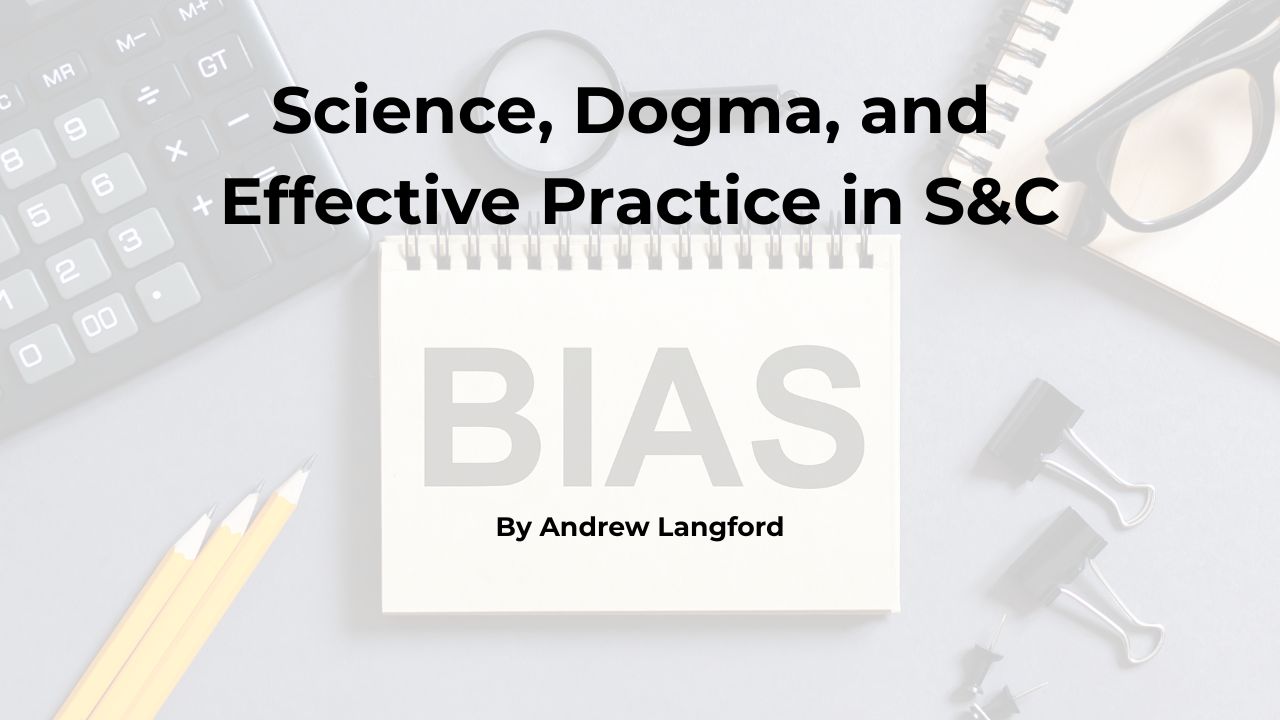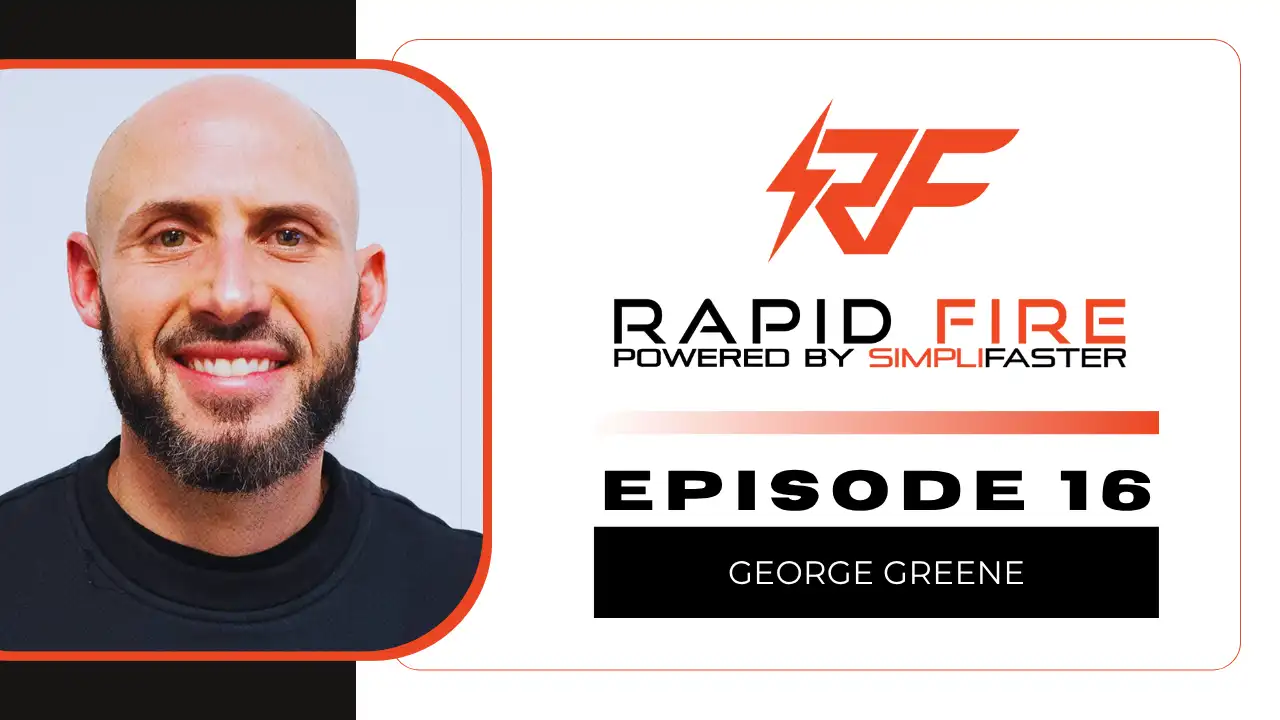[mashshare]
Every year around January, coaches seem to want to get back in the saddle with reading, and this year I made a list that holds its own. Books are wonderful creations, as we get to literally peer into the minds of great coaches and sports performance professionals. Sometimes books are written by a collection of experts, so the value transcends more than cost per page, since it taps into years of research and experience.
For 2020, I created what I think is a list that will satisfy a lot of different professionals besides strength and conditioning coaches, but I am sure that this also hits the nail on the head for those in the iron game. Last year, I barely had time to do the reading I felt was necessary to learn, but this year it’s about reading less and being more selective. Let’s face it, reading is key, but we can’t read everything, so we need to set priorities. If you want to take your training to the next level, I recommend these 10 titles. The list also includes alternatives, as a few are not inexpensive, and some are hard to find.
How I Made the Book List for 2020
I want to make sure coaches know that I tried to get the right 10 books for the majority of coaches, not just the ones that are new or popular. The list I created does not include books I have previously mentioned or listed, as I want fresh resources that will be read over and over. Sometimes books that are worth sharing don’t get the attention they should, such as Kurt Hester’s work, but I hope that mentioning the text here will sneak in another title. Johnny Parker, Al Miller, and Rob Panariello launched an amazing text, The System: Soviet Periodization Adapted for the American Strength Coach last year, but I assume everyone already purchased it, so I didn’t include it on this year’s list.
I am already working on the list for 2021, as I anticipate that a handful of books to be published in the summer will be worth reviewing, specifically on motor skill acquisition. Obviously, we all should read the research and check out manuals from fellow coaches, but a good book certainly helps the cause.
Finally, I realize that I’ve left out a lot of good books, as well as plenty of career development resources. I do believe coaches should read other books outside of the craft, but many of those are personal interest books and many leadership books don’t age well. To me, a few books read over and over keep us honest, as it’s likely we know what to do but lack the fortitude to stick to what is right. Again, what I think are great books for leadership or business may not resonate with others, and it’s more likely I will be able to identify general training and coaching books that help us all do a better job.
1. The Mechanics of Sprinting and Hurdling – Ralph Mann
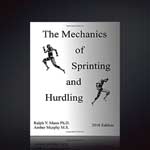 Many coaches will be surprised that I include this text, as it has numerous editions and is fairly popular. My concern is that it’s not read as much as other sprinting books and manuals because it does not give any real coaching recommendations besides summarizing a few biomechanical realities. If you are a sprint or strength coach looking for straightforward information, it’s a wise move to pick up this book and stay patient with it. There is way too much stuff available that is simply theoretical and nearly philosophical, and sprints have no room for fiction.
Many coaches will be surprised that I include this text, as it has numerous editions and is fairly popular. My concern is that it’s not read as much as other sprinting books and manuals because it does not give any real coaching recommendations besides summarizing a few biomechanical realities. If you are a sprint or strength coach looking for straightforward information, it’s a wise move to pick up this book and stay patient with it. There is way too much stuff available that is simply theoretical and nearly philosophical, and sprints have no room for fiction.
For years I have thought about the constraints and models proposed by Mann because they are very accessible data points. Often research and information on speed is too abstract and complex, leaving coaches wondering how to connect the dots. In this book Ralph Mann and his co-author, Amber Murphy, present a complete list of what is known and what needs to be known for elite sport. Obviously, hurdles are not as relevant to those in a team sport, but honestly, it’s important to know how all areas of speed require doing your homework. The data presented in this softcover book is indispensable, and I recommend reading it each year to ensure you ingrain the constants into your analysis of speed.
2. The Triple Jump Encyclopedia – Ernie Bullard and Larry Knuth
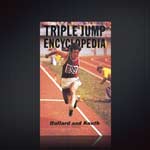 Perhaps the most violent track and field event to the lower extremity is the triple jump, so keeping an athlete healthy requires a coach to do their homework. This book is a bit dated, meaning it’s more than 40 years old, so some of the information does need a refresher, but it’s an excellent resource for all coaches, including sports medicine professionals. I was tempted to include the Polish Triple Jump manual or other works by Starzynski, but this is more robust and extensive. I would still recommend getting your hands on the English work that is about 20 years old.
Perhaps the most violent track and field event to the lower extremity is the triple jump, so keeping an athlete healthy requires a coach to do their homework. This book is a bit dated, meaning it’s more than 40 years old, so some of the information does need a refresher, but it’s an excellent resource for all coaches, including sports medicine professionals. I was tempted to include the Polish Triple Jump manual or other works by Starzynski, but this is more robust and extensive. I would still recommend getting your hands on the English work that is about 20 years old.
The Triple Jump Encyclopedia mainly provides illustrations that are useful for exercise options, but it also outlines some seasonal programming ideas as well as a few tidbits of wisdom. The other benefit of The Triple Jump Encyclopedia is that it was inspired by a time when sport science was weak. It forced the coaches and support staff to think about the demands of the event rather than just do typical performance analysis. A few other books could replace this recommendation, but due to the longevity of the information, it really teaches us to know what is important versus just know more.
3. Pacing: Individual Strategies for Optimal Performance – Kevin Thompson
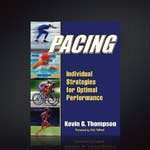 One topic that is many in performance strangely ignore is pacing. Pacing is a vital element in sports, and it seldom gets enough coverage in science and practice. My belief is that we need more effort connecting the combination of preparation and sports psychology. Another book on pacing I think is worth reading is difficult to get a hold of, but the work of Kevin Thompson is perfect for nearly all coaches in sport, regardless whether you are a track coach or team sport professional.
One topic that is many in performance strangely ignore is pacing. Pacing is a vital element in sports, and it seldom gets enough coverage in science and practice. My belief is that we need more effort connecting the combination of preparation and sports psychology. Another book on pacing I think is worth reading is difficult to get a hold of, but the work of Kevin Thompson is perfect for nearly all coaches in sport, regardless whether you are a track coach or team sport professional.
What I love about this book is that it’s written cleanly, meaning it uses no ornamental language and it’s beautifully straightforward. The models and diagrams are easy to understand, and the length and depth are perfect for those trying to upgrade their knowledge over a weekend. Out of all of the books, I recommend this the most frequently because I just see such a large gap in the profession.
Kevin Thompson is from Australia, so it would be great if more North American experts could dive into baseball, basketball, and American football to assist us in seeing the small details of how tactical and physiological interactions occur during competition. With a relatively inexpensive price tag, I think this text is a no-brainer to order for your collection.
4. Science and Application of High-Intensity Interval Training: Solutions to the Programming Puzzle – Paul Laursen and Martin Buchheit
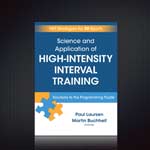 I could easily include Mladen’s book, but I don’t want to appear biased, especially since I recommended his website a year or two ago. His other books and resources are awesome, but because I already recommended his book earlier, I included Paul Laursen and Martin Buchheit here to round out the sports conditioning side of things. They also have a course that you can take to demonstrate competency in the topic, but because I don’t know much about the educational resource, the book is a good addition to a coach’s library.
I could easily include Mladen’s book, but I don’t want to appear biased, especially since I recommended his website a year or two ago. His other books and resources are awesome, but because I already recommended his book earlier, I included Paul Laursen and Martin Buchheit here to round out the sports conditioning side of things. They also have a course that you can take to demonstrate competency in the topic, but because I don’t know much about the educational resource, the book is a good addition to a coach’s library.
Even if you are a track, swimming, or cycling coach, seeing how they solve the riddle of fitness is really useful for becoming a better programmer. If you have read my articles, I do mention Martin Buchheit frequently, but it was nice to learn from Paul Laursen as well. He is known as an endurance or aerobic fitness specialist but is clearly also a knowledgeable scientist in all areas of conditioning. If you want to prescribe training with a clear purpose and standard, this seminal work is a great start. Again, this blog article is for all performance coaches, and it can be read by team coaches so they understand the process of program design for fitness in sports.
5. Concurrent Aerobic and Strength Training – Scientific Basics and Practical Applications – Moritz Schumann and Bent R. Rønnestad (Editors)
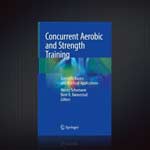 I realize that plenty of coaches will see this recommendation as a little repetitive of the Buchheit and Laursen text, but this book is a little bit heavier on the scientific theory. My rationale behind including it is that it’s written by a lot of different experts, and it goes even deeper than #4. The application side won’t help a coach write a workout for Monday, but it will help a coach invest in the right information to construct training in the future.
I realize that plenty of coaches will see this recommendation as a little repetitive of the Buchheit and Laursen text, but this book is a little bit heavier on the scientific theory. My rationale behind including it is that it’s written by a lot of different experts, and it goes even deeper than #4. The application side won’t help a coach write a workout for Monday, but it will help a coach invest in the right information to construct training in the future.
One of the reasons I recommend this title is its focus on the molecular science of training, as we are getting closer to understanding how athletes really adapt to workouts. In addition to the balance between neuromuscular enhancements and aerobic conditioning improvements, the book covers nutritional factors and inflammation. Honestly, it’s a wonderful book with a plethora of experts, including Iñigo Mujika, an author I recommended last time I created a list. If you are not in high-performance sport, or don’t work with youth athletes, this text is excellent for understanding the differences and similarities between different age groups and between genders.
If you’re a speed and power expert and really want to know your concurrent training obligations, this book is a great investment, says @spikesonly. Share on XI recommend getting the book and not just buying chapters online unless you are pressed financially and only need a narrow topic. The value of the book is that all of the chapters together are so much less expensive than buying one at a time. If you are serious about endurance sport, this caters more to the conditioning side of things, but if you are a speed and power expert and want to really know your concurrent training obligations, it’s a great investment.
6. Biomechanics of Training and Testing: Innovative Concepts and Simple Field Methods – Jean-Benoit Morin and Pierre Samozino (Editors)
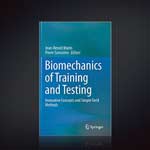 This field guide by JB Morin and Pierre Samozino is an excellent start to testing athletes. I don’t know the population for which this is most appropriate, but I think a strength coach or track coach could benefit from at least a few chapters. Due to the inclusion of cycling, I would say this is a perfect text for a sport scientist who is just wrapping up their degree and wants to have protocols for assessing athletes. My favorite chapter is on sprint testing, as it’s one of the best working models on speed training. Obviously, coaches need to factor in elements beyond the general whole-body model, but for the most part the outline is nearly flawless.
This field guide by JB Morin and Pierre Samozino is an excellent start to testing athletes. I don’t know the population for which this is most appropriate, but I think a strength coach or track coach could benefit from at least a few chapters. Due to the inclusion of cycling, I would say this is a perfect text for a sport scientist who is just wrapping up their degree and wants to have protocols for assessing athletes. My favorite chapter is on sprint testing, as it’s one of the best working models on speed training. Obviously, coaches need to factor in elements beyond the general whole-body model, but for the most part the outline is nearly flawless.
Other chapters are almost as strong, but I believe the entire book is worth getting because you can use the information for other training needs. For example, the jumping and upper body assessments are very novel and useful. I will say that books like this are part of the evolutionary process, and it’s up to coaches to extract what they see as valuable and accept the limitations of current science. Researchers should be more open to learning from coaches and put more effort into ecological validity and studying training programs. This book is a valuable resource, and I think anyone putting a fair effort into testing can make their training more targeted and effective.
7. IOC Manual of Sports Cardiology 1st Edition – Mathew G. Wilson, Jonathan A. Drezner, and Sanjay Sharma
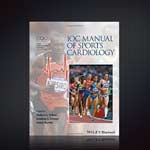 The heart is a special organ system, and it has never been admired by speed and power coaches like the neuromuscular system has. We tend to worship the brain but leave the heart to endurance experts. This is not a book that you can pick up and skim through. I would say that this book is a year’s worth of study, and it can take a neophyte in cardiology and leave them prepared to make a difference. Often the heart is left to sports medicine, but we have a responsibility as coaches to know what to look for and when to outsource to a specialist.
The heart is a special organ system, and it has never been admired by speed and power coaches like the neuromuscular system has. We tend to worship the brain but leave the heart to endurance experts. This is not a book that you can pick up and skim through. I would say that this book is a year’s worth of study, and it can take a neophyte in cardiology and leave them prepared to make a difference. Often the heart is left to sports medicine, but we have a responsibility as coaches to know what to look for and when to outsource to a specialist.
The purpose of the book is not only to reduce sudden athlete death; the information is very important for conditioning and being informed when athletes have complicated backgrounds. Cristiano Ronaldo had heart surgery as a youth athlete, and several high-profile athletes have died during games or practices. The heart is a responsibility, not a burden, and for the last year I have spent hours learning and trying to understand basic health issues.
If you are involved with your team’s screening process, you also may want to see if you can do echocardiograms for performance, as yearly measurements of the heart wall and chamber can determine if all the “extra training” is really making a difference. The price and length of this book isn’t for the casual recreational athlete; this is for professionals in scholastic performance and elite settings.
8. The Psychology of Sport Injury and Rehabilitation – Monna Arvinen-Barrow and Natalie Walker (Editors)
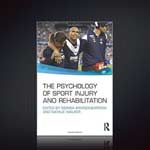 Another gap in what we do as professionals is truly understanding the psychology of athletes, typically during injury. I believe more athletes have quit the sport they love not because they are tired of failure, but because injuries have made the emotional strain of coming back too great to continue. I understand that physical trauma takes its toll, but the mental anguish an athlete can encounter is an area that we need to do better with.
Another gap in what we do as professionals is truly understanding the psychology of athletes, typically during injury. I believe more athletes have quit the sport they love not because they are tired of failure, but because injuries have made the emotional strain of coming back too great to continue. I understand that physical trauma takes its toll, but the mental anguish an athlete can encounter is an area that we need to do better with.
So many times, an athlete is thrown to the wolves or demons when they are hurt repeatedly, often getting labeled as “injury-prone.” Injuries are part of sports, and this text reviews the more academic side of the issue of regulation in sport. Do I think this title is a workbook? No. Do I think it’s an excellent framework for those in applied settings to have a better indication of what they need to have in place? Yes.
With injuries being so common and mental health so important, a book of this nature should be in every sports department’s library, says @spikesonly. Share on XI know other resources are available, but I firmly believe that sport psychology is so far down on the totem pole that we need something like an anchor text. With injuries being so common and mental health so important, a book of this nature should be in every sports department’s library. The editors did a great job rounding out the contents of the book to be comprehensive, and practitioners can make great strides forward by studying this resource over and over again.
9. Performance Assessment in Strength and Conditioning – Paul Comfort, Paul A. Jones, and John J. McMahon (Editors)
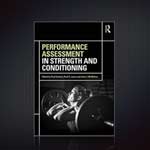 Due to the strength of all the contributors, this is perhaps the most useful strength and conditioning testing book available. One of the reasons I like the book is that it’s not just for strength and power—it also includes conditioning and experts in that domain. In addition to the conventional power and jump testing, the book includes application and guidelines to present the data. I also like that the book includes change of direction testing as well as isometric assessment.
Due to the strength of all the contributors, this is perhaps the most useful strength and conditioning testing book available. One of the reasons I like the book is that it’s not just for strength and power—it also includes conditioning and experts in that domain. In addition to the conventional power and jump testing, the book includes application and guidelines to present the data. I also like that the book includes change of direction testing as well as isometric assessment.
The length of each of this book’s chapters is the perfect amount of information to guide coaches; unlike other books, the chapters aren’t so short that they barely scratch the surface and leave coaches disappointed. This book is not just for advanced coaches, and a hungry young coach should be more than satisfied. I do wish there was more information on weightlifting, specifically doing analysis on the snatch and clean. Otherwise this book is in the “near Bible” category, where a book is so good you just list it and don’t bother recommending other options.
10. Olympic Weightlifting: A Complete Guide for Athletes & Coaches – Greg Everett
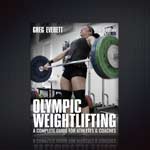 I have other manuals and books on weightlifting, but this one is extensive and accessible. In the past I listed books in other languages, but that became an issue that I simply didn’t want to repeat. Everett’s book was always a good resource, but after its expansion from the earlier edition and due to the great videos on his website, I needed to include it here. One of the biggest problems with weightlifting books is that there are not enough of them!
I have other manuals and books on weightlifting, but this one is extensive and accessible. In the past I listed books in other languages, but that became an issue that I simply didn’t want to repeat. Everett’s book was always a good resource, but after its expansion from the earlier edition and due to the great videos on his website, I needed to include it here. One of the biggest problems with weightlifting books is that there are not enough of them!
Seriously, the issue with weightlifting is that the best coaches are not very active with sharing information, and this is still a problem today. True, there are a lot of books available, but they are usually shallow resources that just give a few tips for newbie athletes or coaches. This helped me out a few times, as it will always keep a coach honest with concepts that are important to know. A few coaches who purposely decide not to use weightlifting should check out the book, as it does have general training information that is useful beyond the technical side.
I will suggest, if you have the money, that you read the book Weightlifting Movement Assessment & Optimization: Mobility & Stability for the Snatch and Clean & Jerk by Quinn Henoch, as it’s a well-thought-out reflection on what the movements will require in terms of mobility. Again, we need more here, as the two books won’t be enough to satisfy a career coach, but the work by Everett certainly covers the bases with flying colors.
Balance Your Reading
One last recommendation is to read titles that simply have no connection to strength and conditioning or speed training. It’s not a sin to read for pleasure, as plenty of good books exist that are just great for entertainment. Don’t get trapped by the productivity and knowledge race, as a happy mind is a brain that grows. Feeling unnecessary pressure to read what everyone else is reading is a bad idea. For years I have read what my peers have recommended, and that was instrumental to improving. Now I read books that simply satisfy my curiosity or provide the right next steps to further improving what I think I need to know more of.
Don’t get trapped by the productivity and knowledge race and feel pressure to read what everyone else is. There are plenty of books that are just great for entertainment, says @spikesonly. Share on XThe process of selecting books is a humble one, as it’s not about posting the titles you think are important for others to know, but finding the right information you think will close a hole or gap in your knowledge base. Find the right balance for you, as we will always know more than what we can get athletes to do, so don’t stress out. I have found that this past year I really made progress by reading when I wanted to, not chasing a pace that is likely unsustainable. Not only did I feel I retained more, but I enjoyed every minute of it.
Since you’re here…
…we have a small favor to ask. More people are reading SimpliFaster than ever, and each week we bring you compelling content from coaches, sport scientists, and physiotherapists who are devoted to building better athletes. Please take a moment to share the articles on social media, engage the authors with questions and comments below, and link to articles when appropriate if you have a blog or participate on forums of related topics. — SF
[mashshare]

